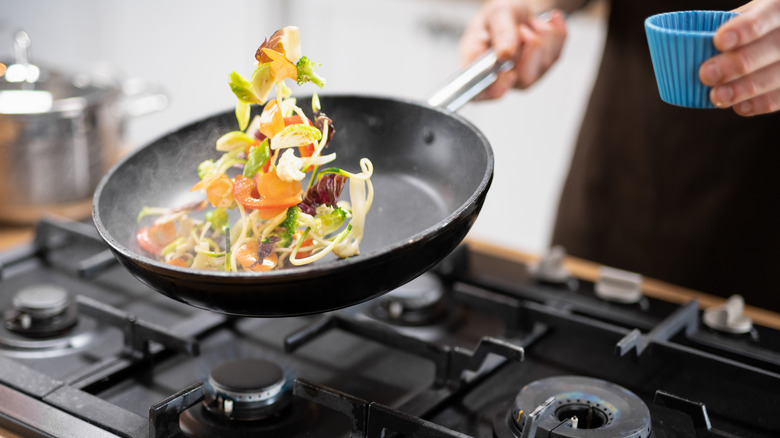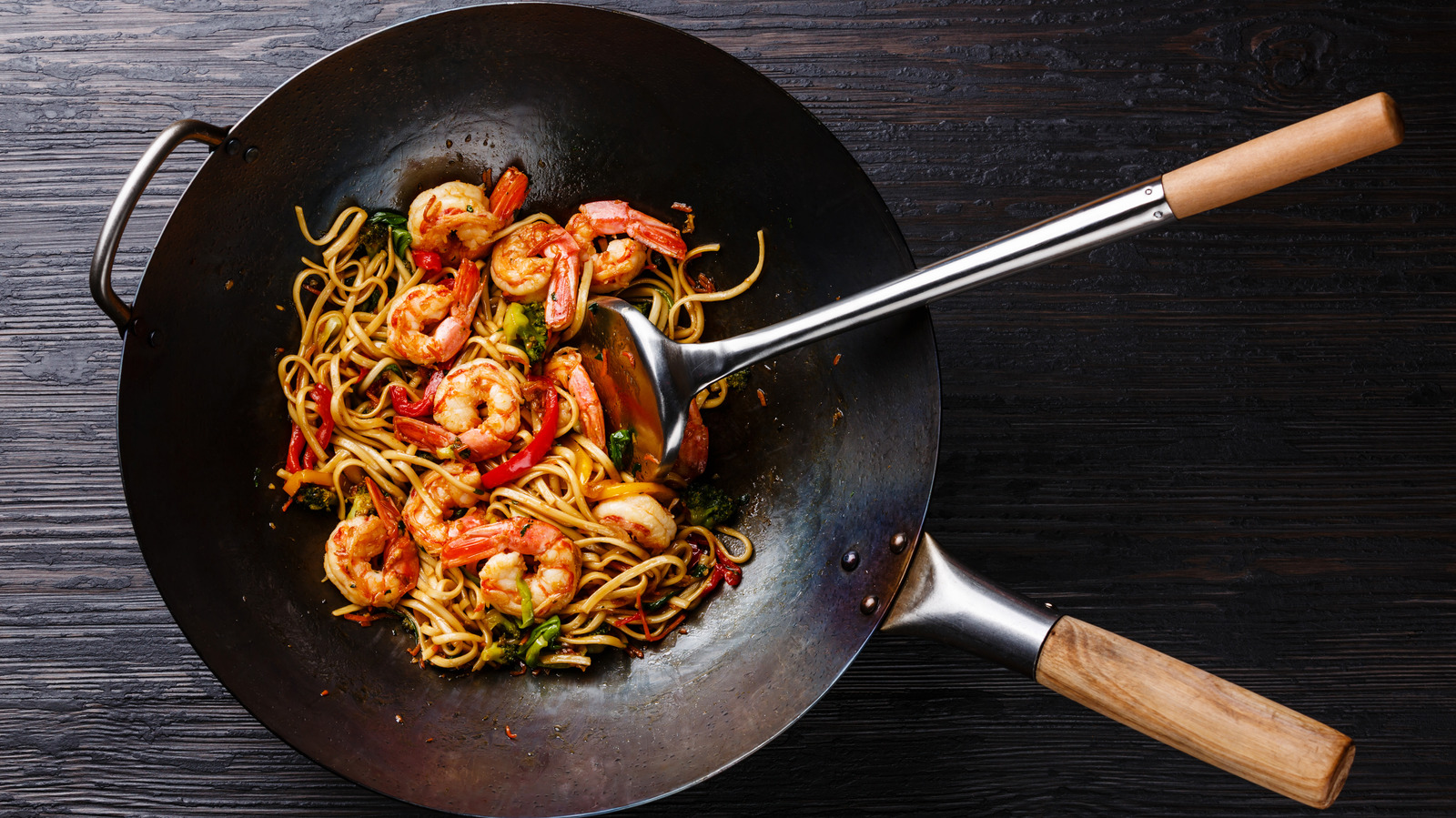For about the last 2,000 years, the wok has been the pan of choice for cooking up delicious stir-fries. And there are plenty of reasons why a wok is the absolute best pan for stir-frying: The tall edges mean you can toss your meat and veggies with less fear of losing your food, and the varying depths in the skillet mean that you won’t have to expose your ingredients to high heat the whole time they’re cooking. Plus, these pans can hold tons of food, meaning you can easily whip up a stir-fry for your whole family all at once. The only problem? Not everyone owns a wok. And if you’re not yet an advanced stir-fry maker, you may want to dip your toes in these waters without buying a whole new tool.
Luckily, chef and content creator Jon Kung has a solution for you. As he told Look, you can use a nice carbon steel pan in the meantime. While some woks are made out of cast iron, plenty are also made out of carbon steel anyway, so frying pans made of the latter material will serve as a worthy replacement. Unlike non-stick skillets, these pans will allow you to crank up the heat so you can properly cook your stir-fry, which is one of the reasons carbon steel pans are so popular in chefs’ kitchens. But you may love them because they’re also durable, lightweight, and affordable.
Give your stir-fry breaks from the heat

The only drawback to using a carbon steel frying pan instead of a proper wok? It typically won’t have those nice, sloping walls that the latter does. But luckily, a few tweaks to your cooking technique can make up for the difference, here. When it comes to using a carbon steel skillet, Jon Kung told Look, “I would think tossing and taking the pan off the heat would be more important because a wok’s shape is more forgiving when it comes to putting food in and out of the high temperatures when stir-frying.”
Since a wok’s walls allow the ingredients to take breaks from the high heat at the bottom, you’ll want to mimic this effect with your carbon steel skillet. As Kung suggests, remove your pan from the heat intermittently so that your food doesn’t burn. You may also want to cook certain elements of your stir-fry separately (like the meat and aromatics), then quickly combine them to warm everything up at the end.
As for the tossing, practice makes perfect here — but to imitate the pros’ wok-tossing techniques, try pushing your food away from you in your pan, then flicking your wrist to gently sling it in the air for a second. By the time you do purchase a wok for yourself, you’ll be a full-blown stir-fry expert.







